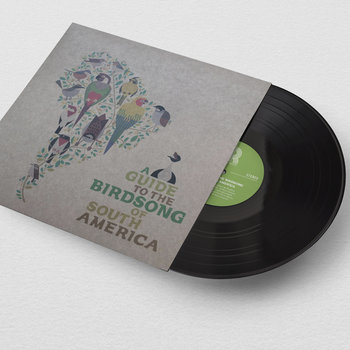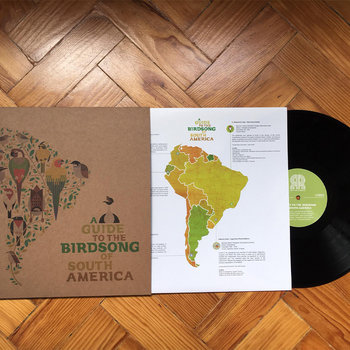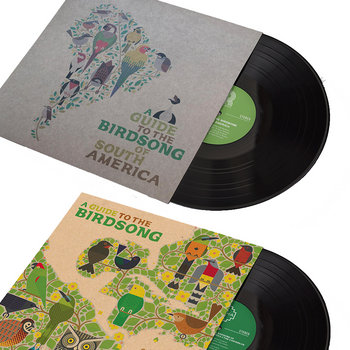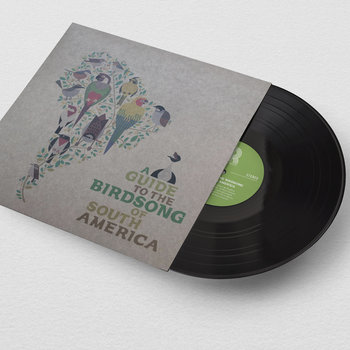
Birdsong has inspired musicians from Beethoven to Pink Floyd, but DJ and producer Robin Perkins has taken birdsong-based composition to a new level. Perkins, aka El Búho (“The Owl,” in Spanish), is a producer, environmentalist, and former Greenpeace campaigner originally from Glassup, England; he’s also behind the recording of two bird-focused albums: 2015’s A Guide to the Birdsong of South America on Rhythm and Roots, and A Guide to the Birdsong of Mexico, Central America and the Caribbean on Shika Shika, the proceeds from which benefits bird preservation organizations. In other words the albums are, quite literally, for the birds.


, Vinyl LP




The Birdsong project developed in phases. First, Perkins researched which birds were either endangered or threatened birds in various countries. Then, he invited artists from each of those countries to participate in the project, sending them samples of songs from the endangered birds and requesting each of them select one birdsong to serve as the centerpiece for their composition. Each musician approached he project differently. Cuba’s Isnay Rodriguez, aka DJ Jigüe, was struck by the complexity of the birdsong of the ferminia. “When you listen to it, you can hear different emotions, feelings, variations,” he says. The sound of the ferminia evoked a melody that he could use as a point of departure. He didn’t want to use the birdsong simply as a complement: “I wanted to be led, and to be taken away by the bird’s song, and manipulate the birdsong as little as possible.”
Tamara Montenegro & NAOBA, from Nicaragua, chose the momoto carenado (guardabarranco in Spanish) for its symbology. “This bird is the guardian of the underworld in Mayan tradition,” Montenegro says. “I wanted to represent the journey that our souls make to the underworld during our lifetimes, to create evolution to reach the light on the other side”. She chose to give the momoto carenado a “solo” in her piece, as if the bird were an instrument, surrounding it with regional instruments such as the charango, the cajón, and marimba-like sounds for a lyrical folk and roots-influenced piece.
, Vinyl LP




Johnny Gutierrez, aka NILLO, is the founder of Random Collective Records and has a decades-long history of eco-activism and work with indigenous rights organizations. Gutierrez was captivated by both the hypnotic melody and the percussiveness of the tamara hormiguera carinegra. Nillo and featured vocalist Majo wrote lyrics for the song, imagining an ancestral bird communicating with humans. He also looked to the region’s beloved danzón genre for inspiration, wrapping layers of the bird’s notes in mystical, textured electronics, over which Majo-as-bird intones: “Bailo y vuelo entre estas llamas, mientras intento no desaparecer (‘I dance and sing amongst these flames…as I try to not disappear’).”
, Vinyl LP




Avian symbolism was also important to Valentine Roche, aka Mȁ̲̠̻ͥ̾ra͔̥̩̾͊̑cuyá͊, who hails from the Dominican Republic. For her composition, “Cuco Cuco Picogordo,” she worked with vocalist, birdsong specialist, and biologist Jimena Obregón (a member of Guápil), building her soaring vocal line based on an ancient Latin American folk song of unknown origins. In the tune, Obregon’s voice soars and floats, luminous over a driving beat that blends in recordings of both the bird’s wet forest habitat and chirps from its favorite treat—cicadas.
, Vinyl LP




The Garifuna Collective’s contribution was led by Belizean touring guitarist and band manager Al Ovando. Ovando and his son are devoted birders, and he found a natural connection between the Garifuna Collective’s desire to keep their Afro-Indigenous Garifuna language alive through the music—an integral part of founder Andy Palacio’s vision—and the Black Catbird’s struggle to survive. Ovando recruited several guitar players and drummers from the Collective to participate in the recording, but never forgot the foundation of the Garifuna groove: “We had to figure out how to add the Garifuna element—keep our taste, like the turtle shells and the Garifuna drums.”
, Vinyl LP




Marco Polo Gutierrez, aka Siete Catorce, was drawn in by the poignancy of the loro cabeza amarilla’s song. Though he’s sampled birdsongs in his music before, the song of the loro cabeza amarilla sounded anguished—very human, like a scream…full of anger or pain”—and he sought to convey those emotions in his song. One of the reasons the loro cabeza is threatened is because of its uncanny ability to mimic the human voice—these birds are often sought out because they can be taught to “talk.”
For Perkins, the Birdsong projects have a profound importance. “Music has an incredible power—especially, electronic music and popular music [have] a power to convey a message, and to reach a lot of people in a different way that any organizations or charities or NGOs can’t do,” he says. “There’s something really interesting about using music as a kind of tool to offer a perspective on an issue. Especially electronic music [which has historically] missed this angle—it’s a genre that has for a long time focused on hedonism, having fun. Electronic music can also be about activism.”









